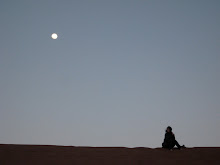Noémie Lafrance, The Whitebox Project, dance performance at Black and White Gallery/ Project Space, Brooklyn, 2011
People gathered in the bleak concrete backyard of the Black and White Gallery, chatting in groups, milling about. “The Whitebox Project,” Noémie Lafrance’s performance piece, had already been described as being influenced by flash mobs, so everyone knew what was about to happen. Still, we stood and talked to one another in anticipation. The volume of human voices speaking out loud in the roofless room started to escalate unnaturally, to the point where to continue a conversation, you practically had to shout. Then the volume dropped drastically, and performers emerged from the mass of people, starting to make simple patterns of movement along the floors and walls.
Eventually, about 20 dancers revealed themselves to be a part of the piece, and proceeded to work their way through just about every existing postmodern dance reference. They walked, ran, talked, shouted, kicked, shimmied, sat down, stood up, laid down, and even created some strange cheerleader-like formations of movement and chanting. None of the sequences lasted too long—some of the performers undressed within the mob of people, a trope that didn’t shock and wasn’t tender or powerful, but did make me feel sorry for the dancers participating in the pretentious nod to vulnerability. They put their clothes back on; they herded us the way my parents’ border collie used to, running in circles around us a little too close for comfort, forcing a shift in location. They also encouraged us to join in and participate in the simple physical motions. I noticed one young woman who happily followed along with the Simon Says-like instructions from the score; most resisted.
At the post-show talk with the audience that comes at the end of every performance, and is actually a part of the piece, my fears about the breadth of the organizing concept for the project were confirmed. Underlying the somewhat interactive though hardly coercive gathering was a real desire to get the audience to dance. Lafrance and her dancers talked about the idea that once you “break the boundaries between audience and performer” or “challenge the conventions of the proscenium stage,” then the result will be a kind of physical participation by audience members—a democratization of the space whose perfect expression is the erasing of the distinction between performer and viewer. After over 60 years of this kind of thinking about the destabilization of theatrical conventions, including a popular resurgence in the 1990s, we’ve already had a backlash against it. Theorists have weighed in. Jacques Rancière pointed out, and I tend to agree, that there is nothing inherently wrong with recognizing the distinction between the roles of viewer and performer. What is wrong, he asserted in his book The Emancipation of the Spectator, is to assume that one role is less free, less powerful, or less interesting than another.
As any critic will tell you, the experience of the viewer is always active—to initiate thought, to respond, and to feel are not verbs we should dismiss as non-participatory. Why, then, should viewers dance? And why should they be asked to verbally respond to the performance after the piece, in order to influence its future iterations? My problem with the concept of the piece—despite its often striking visuals and a few lovely experiential moments in space—can’t be removed from a general frustration with our culture of affirmation. We assume that we can judge success by how many people have jumped on in support and participation, and longwinded, inane comments are dutifully welcomed, as if they embody democracy itself. This kind of climate assures that no one gets heard; there’s a jumble of opinion, very little thought, and an overall lowering of the bar because of too much awareness of audience diversity and limitations. Ironically, in this piece, attempts to draw out active participation and response take away the true power of an audience member to have his or her own natural reaction to the visual material. I never liked to be talked down to as a child and I don’t appreciate it much now; if you’re giving viewers something to look at, step back and believe in their ability to see.
